Feeding strawberries with boric acid during flowering and fruiting
The use of boric acid for strawberries during flowering is justified in cases where there are signs of boron deficiency on the bushes. The element must be added in an exact dosage. An excess of any fertilizer will not lead to anything good. It is imperative to study the rates for the introduction of certain funds before applying them in practice. Correct feeding will definitely improve the quality of the crop, prolong the fruiting period, and support the immunity of plants.
Why do strawberries need feeding during flowering?
Flowering is an important stage in the development of strawberries. The quality and quantity of the future harvest depends on the correct formation of the buds. During this period, strawberries should receive all the necessary micro and macro elements. When applying dressings, it is necessary to consider:
- condition and age of the plant;
- climatic conditions;
- soil composition.
Today there is a large number of industrial fertilizers, but not all summer residents trust them. Many people use natural dressings prepared according to folk recipes. For these purposes, iodine, potassium permanganate, ammonia, yeast and some other means are used. However, it is also impossible to overfeed strawberries, she does not like this. During flowering, fertilizers are applied only once, based on the needs of the crop.
Fertilizers introduced in liquid form are best absorbed. According to the rules, this should be done the next day after watering or the last rain. Fertilizer is applied to moist soil so as not to burn the roots. Avoid getting the nutrient solution on flowers and berries. The composition is applied at the root or sprayed with the stems and lower leaves.
The age of the plants is also important:
- In the year of planting, strawberries are not fed, they have enough fertilizers laid in the soil when preparing the beds.
- In the 2nd year, fertilizing with mineral and organic fertilizers is alternated.
- In the 3rd year, only mineral complexes are used.
- In the 4th year, organic and mineral supplements are again used.
Signs of Boron Deficiency and Excess
Boron deficiency is manifested by the following symptoms:
- The strawberry leaves begin to curl and die off.
- Sometimes the symptom is the deformation of the leaf plates, the appearance of a dry border along their edge. No matter how much such strawberries are watered, they always look slightly wilted. If you do not add boron-containing fertilizing in time, the leaves will deteriorate further. Ultimately, the entire plant may die. Root decay and dying off of the growth point will occur.
- With a not so strong shortage of boron, its deficiency is noticeable in the formation of small ovaries. The number of berries in this case will be very small, and the taste of the fruit is unlikely to please. The strawberries will turn out to be watery with little sugar.
Excess boron, in turn, leads to impaired root growth, and the development of the vegetative part also slows down. On the leaves, you can see foci of necrosis in the form of yellow drying areas and reddish pinpoint burns.
Excessive content of the element is also dangerous because boron accumulates in fruits and can cause poisoning after consuming such berries.
For preventive purposes, boron treatment of strawberries is performed in the spring before blooming and at the fruiting stage, when the berries become quite large. Boron deficiency is especially pronounced on sandy and calcareous soil, where it is washed out of the soil with water during irrigation.
Top dressing during flowering
In order to feed strawberries with boron during flowering, the foliar method is more suitable - spraying. Once directly on the leaves, nutrients are transported faster into plant tissues. This method can be considered as providing an ambulance with signs of boron deficiency.
Top dressing is prepared from boric acid by dissolving 2 g of the drug in a small amount of hot water and then increasing the volume of the working solution to 10 liters. Practice shows that this technique helps to increase crop yields by 30%.
If there are no signs of boron deficiency in strawberries, other means can be used for feeding during the flowering period. For example:
- Iodine. You will need to do 3 sprays at intervals of 7-10 days, starting from the moment the buds appear. To prepare the solution, 7-9 drops of iodine tincture are used per 10 liters of water. Such feeding will not only saturate the plants with iodine, but also prevent the development of gray rot, especially if the weather is cool, damp.
- Manganese, ammonia. During the period of opening the buds, the solution of these substances should not be too concentrated. Treatment with ammonia will help scare off wasps and ants from the strawberry bushes, and also give the plants the strength to bloom. Potassium permanganate serves as a source of manganese and at the same time prevents the development of late blight, powdery mildew and various spots. To prepare the composition for 10 liters of water, add 3 tbsp. tablespoons of ammonia and 1/3 teaspoon of potassium permanganate crystals.
- Yeast. This dressing is used before flowering, when buds begin to form on the strawberries. Fertilization can be applied a second time after harvest. To prepare the nutrient solution, use 100 g of fresh yeast per 10 liters of warm water. The mixture should be infused for a day. Under each bush, add 0.3 liters of such a solution. Feeding with yeast is carried out only in warm weather, at low temperatures the yeast does not work.
It is good during this period to give strawberries a natural organic fertilizer in the form of potassium humate. This substance is extracted from peat. Fertilizer is produced in liquid form. 10 ml of concentrated potassium humate are added to 10 l of water.
Humic fertilizers have a positive effect on the composition of the soil, contribute to the restoration of the fertile layer, improve the immunity of plants and increase their adaptive capabilities.
Potassium serves to maintain the healthy appearance of the bushes and contributes to the accumulation of sugar in fruits. The lack of this element is indicated by the brown tips of the leaves.
Fertilizers during fruiting
In traditional strawberry varieties, the period of active fruiting lasts 2–3 weeks. Repairing garden strawberry gives 2 harvest waves. The last berries on it can be picked even at the end of September. Plants spend a lot of energy on the formation of fruits.
Fertilizing with boric acid after the ovary appears will help accelerate the development of berries. For spraying, use a solution prepared from 10 liters of water and 1/3 teaspoon of boric acid. The crystals are preliminarily shaken in a small amount of hot water, since they are hardly soluble.
Natural organic fertilizers can also be used as a recharge at this stage:
- Wood ash. Feeding with an ash solution makes the berries tasty and aromatic. Fertilizer is prepared from 1 liter of wood ash per 10 liters of water. The composition is used for watering.
- Chicken droppings. To prepare a solution for 10 liters of water, add 2 liters of droppings, mix thoroughly and let it brew for 3-4 hours. The finished composition is poured on strawberries at the root, spending 0.5 liters for each bush.
- Nettle infusion. Fill a bucket halfway with chopped nettle and fill it with warm water. The composition should be fermented under a lid for 5-7 days. The periodically prepared fertilizer is stirred. Before use, the infusion is filtered and diluted by half with water. Nettle infusion is used for root watering. For each bush, 1 liter of green fertilizer is consumed.
If you do not add additional food during fruiting, the berries will be small and tasteless. In order for the nutrients to be better absorbed, they must loosen the soil, facilitating the access of oxygen to the roots.
At the stage of flowering and fruiting, it is better to feed with natural means, not forgetting to observe the dosage. In this case, the harvest will be of high quality and safe. This is especially important for strawberries, because berries are often given to young children.
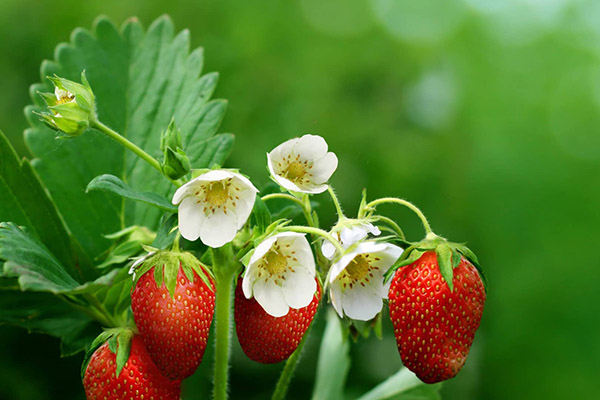
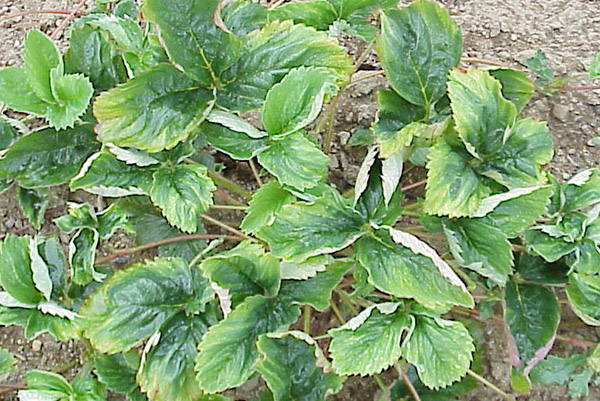
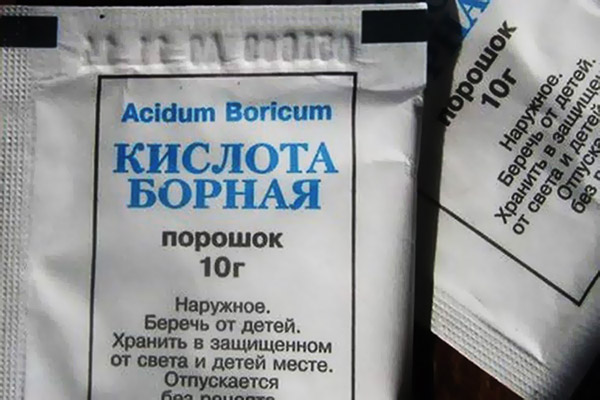
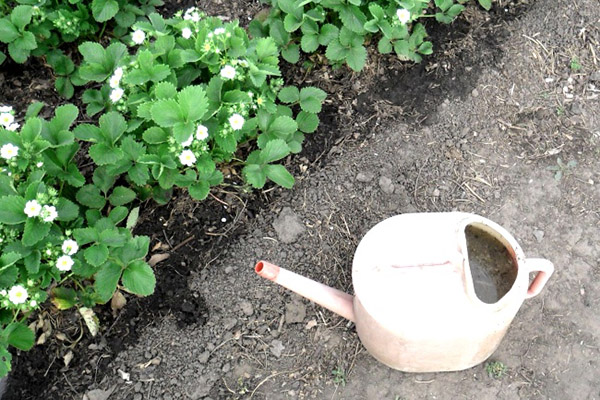
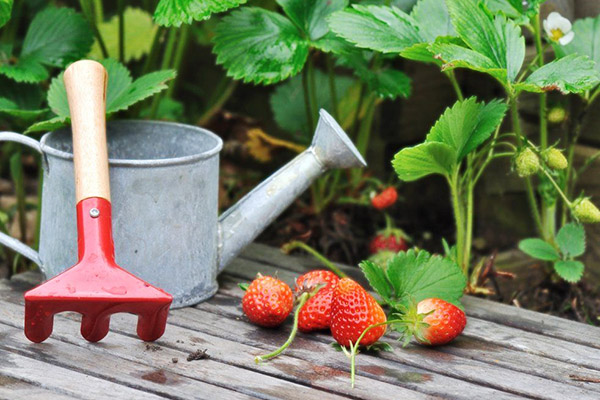

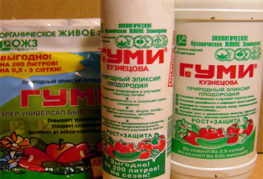
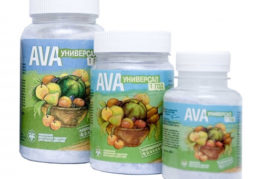
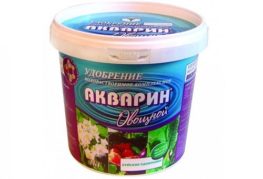
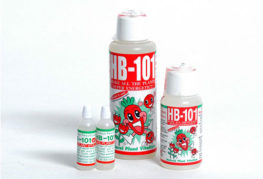
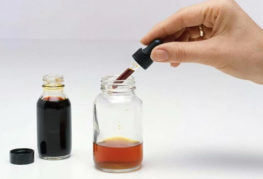
and will be published shortly.